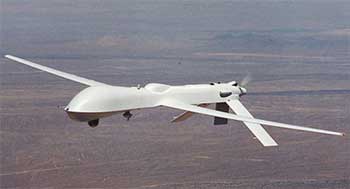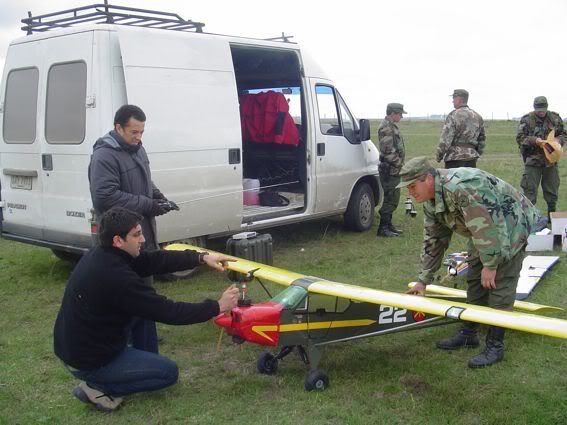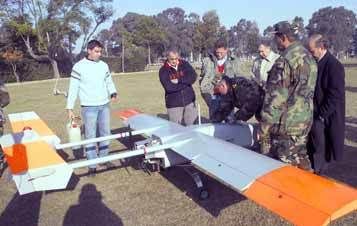Por cierto, muy lindo tu UAV

solo le faltaría volar

, o de última le pueden colocar un monito Tití amaestrado para pilotearlo, al menos aterrizaría

La caída del avión no tripulado -UAV, en sus siglas inglesas y denominado provisionalmente Barracuda- se produjo cuando el aparato se precipitó al mar sobre las 8.10 horas, en la fase final de la aproximación a la base, a apenas 800 metros de la cabecera de la pista 23, después de haber realizado con éxito el vuelo que tenía programado, según el Ejército del Aire. En la recuperación de la aeronave trabajaban efectivos de la Guardia Civil, Protección Civil y EADS-CASA, aunque al estar fabricada en fibra de vidrio es probable que el prototipo no pueda volver a volar. La aeronave accidentada, que comenzó en mayo sus primeros vuelos de pruebas en España, no transportaba ningún tipo de armamento, según el Ejército del Aire, que señala que durante esta última semana todas las pruebas de rodaje y motor dieron resultados satisfactorios, cumpliendo todas las medidas de seguridad.
Los que hicieron el test del UAV español evidentemente estan abusando de la libre estipulación del lenguaje, por eso habría que ver qué entienden ellos por "cumpliendo todas las medidas de seguridad", ya que se accidentó y tal vez no pueda volver a volar


Hablando seriamente, realmente los UAV israelitas son superiores a los norteamericanos??? yo tenia entedido que los UAV norteamericanos estan varias épocas por encima de cualquiera. No me refiero al Shadow ni al predator, sino al Global Hawk o el X-45A (Boeing) y eso que no son casos novedosos, el x-45 lo hicieron en el '99, hace ya 8 años.


Y bueno, inevitable que postee una imagen del predator je je je


 Amigo Francisco 5585, ese Terraco no es venezolano, es colombiano, es desarrollado por una empresa de Cali llamada HR Global Ideas, es más, al comienzo de éste "topic" están los UAV's que se desarrollan en Colombia. En cuanto al helicóptero, ese se compró para hacer pruebas en las bases aéreas, además que también está sirviendo para que la FAC desarrolle sus propios "Helos UAV's" para que todas las bases aéreas tengan varios de estos, pero ya hechos en Colombia....
Amigo Francisco 5585, ese Terraco no es venezolano, es colombiano, es desarrollado por una empresa de Cali llamada HR Global Ideas, es más, al comienzo de éste "topic" están los UAV's que se desarrollan en Colombia. En cuanto al helicóptero, ese se compró para hacer pruebas en las bases aéreas, además que también está sirviendo para que la FAC desarrolle sus propios "Helos UAV's" para que todas las bases aéreas tengan varios de estos, pero ya hechos en Colombia....





 como la activación de mi cuenta en Zona Militar
como la activación de mi cuenta en Zona Militar  . Me mata la ansiedad!
. Me mata la ansiedad! 




 Creo que el que se pasa sos vos, porque yo no me he pasado, y si no nota el "
Creo que el que se pasa sos vos, porque yo no me he pasado, y si no nota el " 




